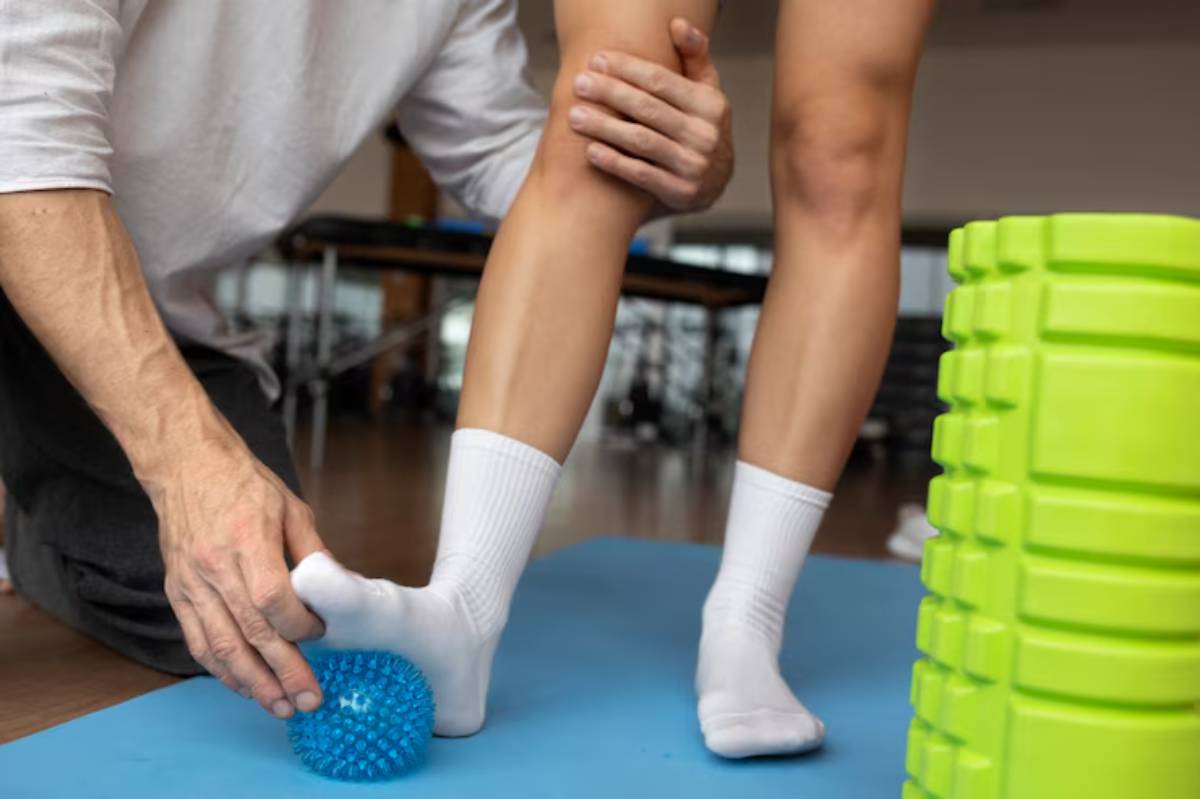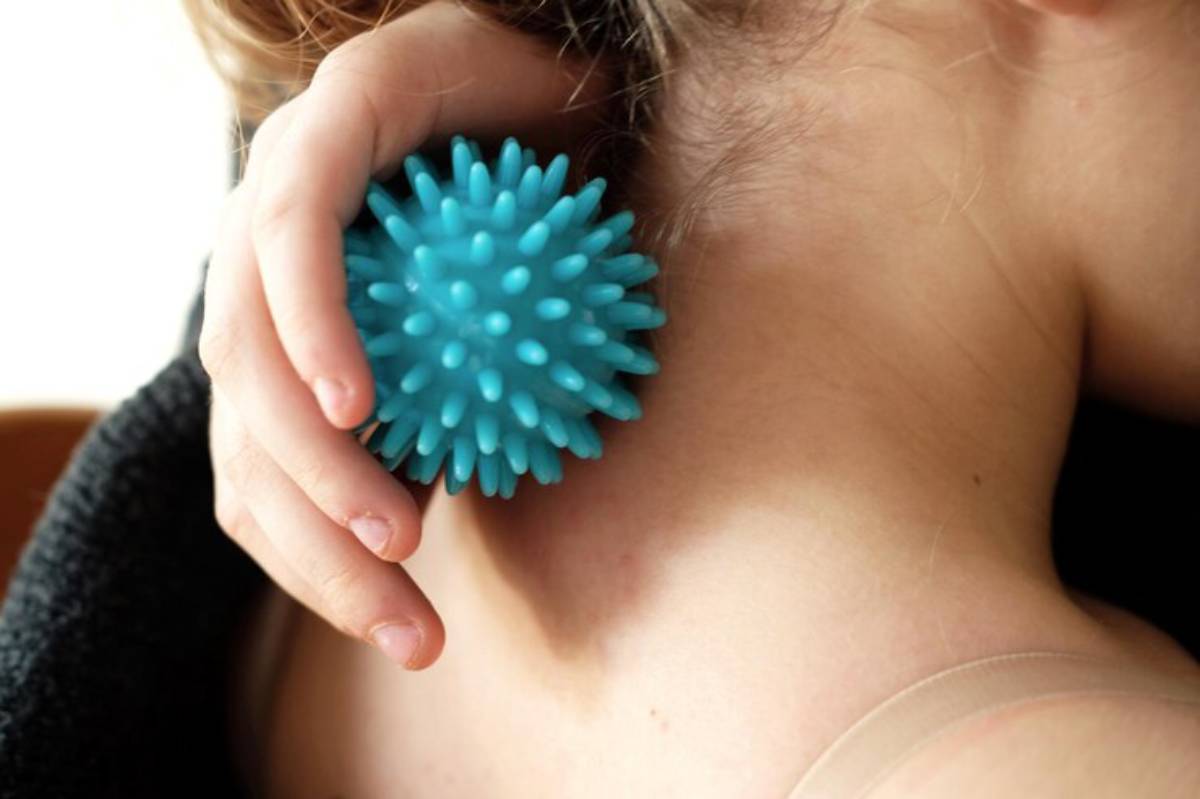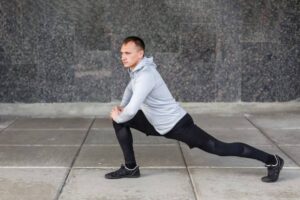The Fitness Blog

Trigger Point Therapy for Pain Relief and Mobility
Ever had a nagging pain in your shoulder that refuses to go away, even though you haven’t injured anything? Or perhaps your hips feel tight no matter how much you stretch? These are classic signs of trigger points — those irritable little knots in your muscles that can cause pain, limit movement, and throw off your training.
The good news? You can do something about it, and you don’t need a physio appointment to start. Trigger point therapy is a powerful self-care approach that targets muscle knots directly, offering both pain relief and improved mobility. When done regularly and correctly, it can transform how your body feels and performs.
In this guide, we’ll break down what trigger points are, why they form, and how to apply pain relief self-care strategies at home. You’ll learn how to safely use tools like massage balls and foam rollers, improve trigger point mobility, and build a muscle-care routine that supports long-term performance and comfort.
What Are Trigger Points?
Trigger points are small, sensitive spots in a muscle, often referred to as muscle knots. They form when muscle fibres become overly tight and fail to release, leading to:
- Localised pain
- Referred pain (pain felt in another area)
- Stiffness or reduced range of motion
- Weakness or muscle imbalance
These tight bands of muscle fibres can be latent (not painful unless pressed) or active (constantly sore and sensitive). Common culprits include poor posture, repetitive movements, muscle overuse, stress, dehydration, and insufficient recovery.

How Trigger Points Affect Mobility and Movement
A muscle knot isn’t just a sore spot — it affects your whole movement chain. That’s because tight muscles alter how your joints move, often forcing surrounding muscles to compensate.
Over time, this can lead to:
- Limited flexibility
- Joint strain
- Uneven strength output
- Poor biomechanics
- Increased risk of injury
For instance, a trigger point in your glute medius (side hip) could make your hip feel “stuck,” which in turn affects knee alignment during squats or running.
The solution? Release the trigger point, and restore mobility where it’s most needed.
Benefits of Trigger Point Therapy
Trigger point therapy is more than a feel-good massage.
When used consistently, it helps:
- Release muscle knots and tension
- Restore natural movement patterns
- Improve blood flow and oxygenation
- Reduce pain and muscle soreness
- Support injury prevention and performance gains
Studies published in the Journal of Bodywork and Movement Therapies show that trigger point release techniques can improve range of motion and reduce pain in chronic cases, particularly in the neck, back, and lower limbs.
Tools to Help With Muscle Knot Release
You don’t need an arsenal of equipment — just a few simple tools make a big impact:
- Massage ball: Ideal for small, focused areas like shoulders, hips, and feet
- Foam roller: Better for larger muscle groups and general soft tissue release
- Peanut ball: Cradles the spine or calves, ideal for the neck and thoracic regions
- Massage stick: Helpful for forearms, quads, and shins
- Your hands: Fingers, knuckles, or elbows can be effective with practice
Each tool applies pressure differently. The goal is to target the muscle without overwhelming it. If you wince or brace, you’ve gone too deep.
How to Locate and Treat Trigger Points
Here’s a simple 3-step approach to using trigger point therapy at home:
1. Find the Knot
- Use your fingers or a ball to feel around the muscle
- You’ll notice a tender, tight spot — sometimes with referred pain
- Breathe through any discomfort, but avoid sharp or radiating pain
2. Apply Pressure
- Hold pressure directly on the knot using your tool or hand
- Maintain pressure for 20–30 seconds, or until the muscle starts to release
- Focus on slow, deep breathing to help the tissue relax
3. Release and Recheck
- Slowly remove the pressure
- Gently stretch the muscle afterwards to reinforce the new length
- Reassess mobility and pain levels
Consistency beats intensity. Don’t try to ‘beat the knot into submission’ in one go — return to it over several sessions for lasting results.

Common Areas to Target With Trigger Point Release
1. Upper Traps and Neck
- Trigger points here often cause tension headaches
- Use a ball against a wall, gently rolling near the base of the skull and the top of the shoulders
2. Glutes and Piriformis
- Can cause deep buttock pain or sciatic-like symptoms
- Sit on a ball or foam roller, crossing one leg over the opposite knee
3. Calves
- Tight calves can limit ankle mobility and cause Achilles pain
- Use a massage stick or foam roller, focusing on the thick belly of the muscle
4. Lats
- Can restrict shoulder movement
- Lie on your side with a ball under the armpit/lat area, rolling slowly
5. Pec Minor (Chest)
- Shortened chest muscles contribute to rounded shoulders
- Use a ball against a wall, pressing just inside the shoulder joint
Each area has unique needs — explore different angles and tool positions to find what works best.
When to Use Trigger Point Therapy
Trigger point therapy works well in several contexts:
- After training: To reduce soreness and improve recovery
- On rest days: As part of a full-body maintenance routine
- Before mobility work: To improve muscle pliability
- During flare-ups: For targeted pain relief
Make it a habit, not a fix. Over time, releasing knots becomes easier and quicker, and your body becomes more responsive to training.
You can even integrate it into your broader self-myofascial release routine to support full-body recovery.
Mistakes to Avoid with Trigger Point Work
It’s tempting to dive in and go all out, but these missteps can do more harm than good:
- Over-pressuring: Too much force irritates tissue and worsens inflammation
- Holding too long: Extended pressure beyond 60 seconds can cause bruising
- Ignoring the nervous system: Breath-holding or tensing the jaw will block the release
- Rolling bones or joints: Always stay on soft tissue
- Expecting instant results: Some knots need time, layering, and repeated sessions
Remember: you’re not breaking up scar tissue in one go. You’re teaching your muscle to let go — and that takes patience.
Pairing Trigger Point Therapy With Breath and Mobility
Muscles don’t work in isolation, and neither should your recovery.
For best results:
- Breathe deeply during pressure work (inhale 4 seconds, exhale 6)
- Follow up with active mobility drills or light stretching
- Finish with gentle movement — walking, swimming, or yoga
This reinforces new movement patterns and prevents muscles from returning to tight, guarded states.
Trigger point therapy becomes even more effective when part of a structured rest-focused fitness plan, especially during deload weeks or after heavy training phases.
Who Should Be Cautious?
Trigger point therapy is generally safe, but you should speak with a professional if:
- You have a history of blood clots or varicose veins
- You’re recovering from a recent injury or surgery
- You’re pregnant (especially in the third trimester)
- You experience sharp, shooting, or burning pain during release
Always listen to your body. Pain relief should never come at the cost of injury.
Building a Trigger Point Recovery Routine
Here’s a sample weekly plan for integrating trigger point work into your schedule:
| Day | Focus Area | Tool | Duration |
| Monday | Upper back & neck | Peanut ball | 10 mins |
| Wednesday | Glutes & calves | Lacrosse ball | 15 mins |
| Friday | Chest & shoulders | Massage ball | 10 mins |
| Saturday | Full body check-in | Foam roller | 20 mins |
Adapt based on your training demands and areas of tension. A few minutes, done consistently, beats the occasional 1-hour session.
Conclusion: Treat the Tension Before It Treats You
You don’t need to live with tight, cranky muscles. Trigger point therapy gives you the tools to work with your body, not against it — helping you move better, feel better, and train harder.
By taking 10–15 minutes a few times a week, you can untangle the knots that hold you back, reduce pain, and improve mobility across the board. Whether you’re lifting, running, or just trying to stay functional, it’s a simple act of self-care that pays dividends in performance.
So get curious. Get consistent. And give your muscles the relief they deserve.









